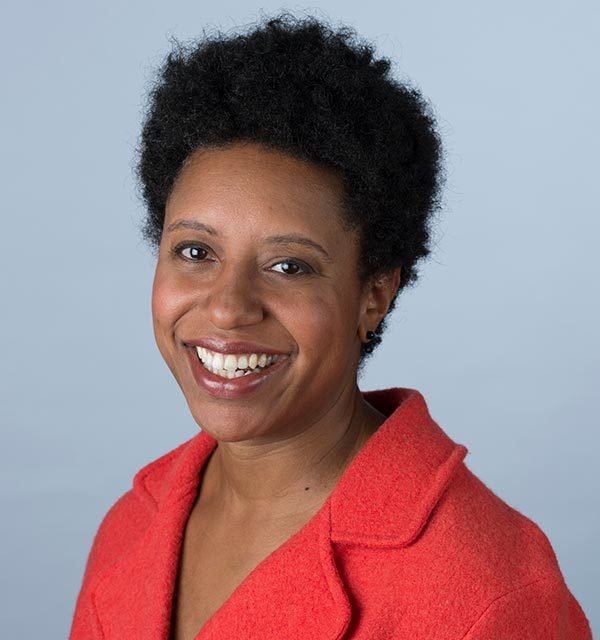Whitney Tome is the executive director of Green 2.0, an initiative dedicated to increasing racial diversity across mainstream environmental NGOs, foundations and government agencies. I have been honored to have her support and mentorship as I take on my role as Director of Equity, Inclusion and Justice at Sierra Club. Today we want to share some of Whitney’s insight about how to build an inclusive environmental movement, so you can learn from her too.
-Nellis Kennedy-Howard
Nellis: Whitney, you’re the executive director for Green 2.0. Can you talk a little bit about that work, and what drew you to it?
Whitney: Green 2.0 works to increase diversity in the mainstream environmental movement, including NGOs, foundations, and federal agencies. Research we have commissioned has found a stunning lack of diversity in those organizations, especially at the leadership and board levels. We are committed to changing that.
As executive director, I oversee all of our work, from research to advocacy to fundraising. My journey to this role started in the world of professional ballet, believe it or not. Following my career as a ballerina, I worked my way up through several environmental organizations but I was constantly nagged by a desire to no longer be the only woman of color in the room. Now I am fortunate to spend my days tackling that problem head-on.
In your time with Green 2.0, what are some big milestones or achievements that make you feel like this work has momentum?
We believe that the first step to increasing diversity is transparency. To that end, we partnered with GuideStar and D5 to collect data on demographics and diversity initiatives at the largest environmental NGOs and funders in the nation. You can see the many organizations that have shared their data and committed to transparency--and those that have not--at http://www.diversegreen.org/data/.
We also recently issued our Diversity Derailed report that looks at the role that search firms play in diversity, especially at the highest levels of organizations. The report also includes checklists of diversity best practices that organizations and search firms can consult.
Though we still have a very long way to go until the environmental movement reflects our nation’s diversity, we do see momentum build every day. Just recently we publically celebrated the hiring or promotion of several new leaders of color in the movement, and we also congratulated Earthjustice on releasing its first Diversity, Equity & Inclusion Report Card.
What are the biggest challenges you see in the work ahead to make the environmental movement more inclusive and welcoming to people of all backgrounds?
The biggest challenge is that so many environmental leaders say that they are committed to diversity, but are too slow in taking real action and forcing change at their organizations. We have heard every excuse you can imagine. At Green 2.0, we are ready to help you get past whatever challenge or excuse you face and help you finally make progress.
I’ve been so lucky to have your support and counsel as I take on my new role at Sierra Club. Are there any observations you can share about Sierra Club’s work so far, or lessons you’ve learned from working with us?
I feel privileged to be engaged in learning more about the inside scoop in many organizations. Sierra Club has made a serious commitment to its equity, inclusion and justice work through the resources - people and finances. That is a huge first step then the willingness to delve into challenging and uncomfortable topics on a regular basis means more to the staff and people who want to be employed by Sierra Club. One of the lessons that I have learned is wonderful and audacious approach that Sierra Club is taking to so many issues from retention, trainings and dialogue. It speaks to the personal and organizational commitment to making change throughout the organization.
At Sierra Club, we’re constantly asked: why not just stick to environmental issues? Why worry about equity and justice at all? How do you usually answer that kind of question in your work? What answer do you give when folks challenge the idea that environmental organizations are part of the larger progressive movement?
The first answer, of course, is that it is the right thing to do. People of color in the U.S. are disproportionately impacted by environmental issues, from pollution to climate change to lead in their water supply. But if that isn’t enough to convince you, then simply look at the political struggles of the movement over the past decade. In order to overcome our challenges, we are going to need all hands on deck. We can’t afford to leave out whole communities.
We’re pushing hard through the Equity Department to help folks understand that “diversity” isn’t enough - that we have to go beyond tokenizing people for their identities and instead anchor all our work in justice and equity. Do you think that if organizations like Sierra Club commit to looking at everything through a lens of justice, we will succeed in attracting more people of color and other folks with marginalized identities?
Absolutely. There is an enormous wealth of talent waiting to be tapped.
Whitney, thank you. Is there anything else you’d like to share with our readers?
Continue stepping into uncomfortable spaces and issues while supporting your peers. These are challenging issues but benefit the people, the organization and society because of the work that you are doing. And know that you will have an external champion for your efforts in Green 2.0.
